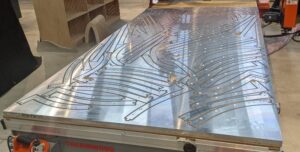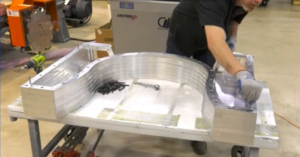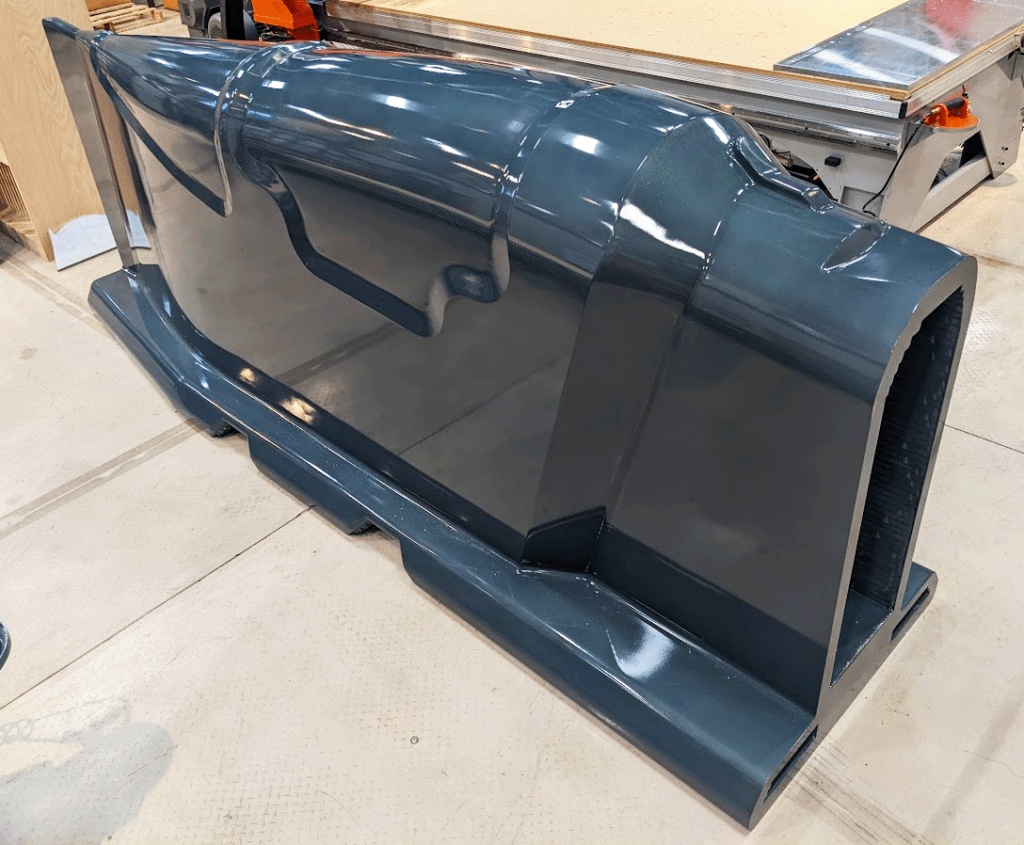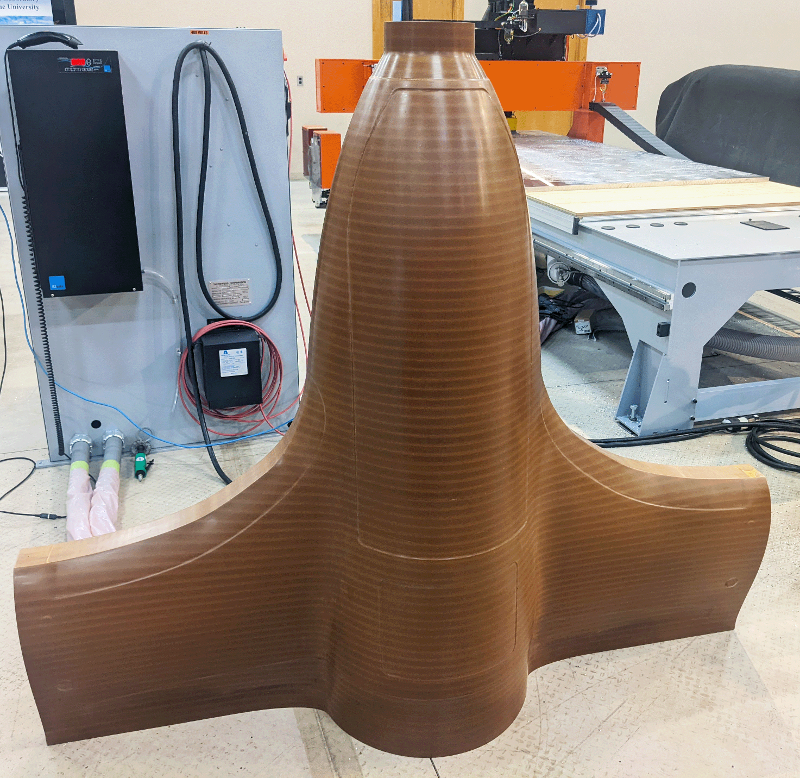Machine manufacturer Thermwood has announced its latest fabrication innovation, a technique it refers to as Cut Layer Additive (CLA). The process is actually a form of CNC machining, Thermwood’s bread and butter, but with some unique features that allows for the production of stacks of material that can be assembled into a complete object akin to one made with additive manufacturing (AM).
The heart of CLA is its software. Relying on machine learning, the tool has been trained to convert CAD data into individual layers to be machined by the CLA system in a two-step process. Step one is “Send it to Shape,” in which the software takes a CAD file and defines the outer surface of the part to be made. In step two, the machine operator selects the material from which it will be made, how thick the walls should be, the amount of trim stock and how many segments will be made for each layer. All of this is performed using a simple visual interface, either on the machine itself or on a computer.
The CLA system then machines each sheet of material loaded into individual segments that additionally have a QR code printed onto them. The parts are then manually assembled, with the QR codes indicating where each element goes in the connection process. Depending on the material and application, these pieces are assembled using the appropriate means, such as glue and dowels or metal screws. Once put together, the complete object can be finished as necessary.
To facilitate assembly, features like dowel alignment holes and insertion markers, as well as attachment holes for bolting metal layers, are incorporated into the fabrication process. Internal passages for internal heating or cooling fluid, in addition to the ability to include internal stiffening structures are in development. The CLA system includes an automatic tool changer with up to 12 tools, an 18 HP, 24,000 RPM router head for fast machining, and a 5’x12’ vacuum cutting table.
So far, Thermwood has demonstrated the use of CLA for the production of an aerospace layup tool made from epoxy-fused fiberboard with plural component urethane coating. It machined and assembled in less time than it took to 3D print using the company’s large-scale AM (LSAM) system with $2,000 worth of material. A drone pattern was produced with just $400 in materials, while a hollow aluminum aerospace trim fixture was also created.
Laminated (or layered) object manufacturing (LOM) is an often neglected but highly promising form of 3D printing that is beginning to have a quiet renaissance thanks to firms like Impossible Objects and Alloy Enterprises. By stacking sheets of material and then separating the desired geometry from the stack, it’s possible to use a much wider range of feedstock than available with other forms of 3D printing. The challenge, however, is how to selectively remove excess matter from the build.
In the case of CLA and Fabrisonic’s ultrasonic AM, machining is the method of choice. Thermwood, however, is still relying on manual assembly, whereas the other processes described have automated techniques for combining the individual layers. When Impossible Objects first began creating its composite-based AM technology, sheets of composite material were manually stacked. Now, as it heads into a new era of development, it has what it describes as the fastest 3D printing technology on the market.
With that in mind, it’s quite possible for Thermwood to automate the assembly process. One can envision a team of industrial robotic arms doing the word, for instance. Because Thermwood, a legacy CNC manufacturer, successfully jumped into additive with large format material extrusion machines, this would not at all be a surprise. In many ways, these established businesses are those primed to best transition into the digital production space under the Biden Administration’s efforts to re-shore manufacturing, as they are already tapped into the defense supply chain that is guiding these efforts.
Therefore, I can easily see Thermwood accessing government funds through Bipartisan Infrastructure Law, Defense Production Act, the Made in America executive order, Inflation Reduction Act, CHIPS Program, and other opportunities created under the Biden Administration and beyond. While maintaining its heartland approach, Thermwood could be one of a number of companies to usher in Industry 4.0 in the United States.
Images courtesy of Thermwood.
Subscribe to Our Email Newsletter
Stay up-to-date on all the latest news from the 3D printing industry and receive information and offers from third party vendors.
You May Also Like
Gorilla Sports GE’s First 3D Printed Titanium Cast
How do you help a gorilla with a broken arm? Sounds like the start of a bad joke a zookeeper might tell, but it’s an actual dilemma recently faced by...
Nylon 3D Printed Parts Made More Functional with Coatings & Colors
Parts 3D printed from polyamide (PA, Nylon) 12 using powder bed fusion (PBF) are a mainstay in the additive manufacturing (AM) industry. While post-finishing processes have improved the porosity of...
$25M to Back Sintavia’s Largest Expansion of Metal 3D Printing Capacity Since 2019
Sintavia, the digital manufacturing company specializing in mission-critical parts for strategic sectors, announced a $25 million investment to increase its production capacity, the largest expansion to its operations since 2019....
Velo3D Initiates Public Offering in a Bid to Strengthen Financial Foundations and Drive Future Growth
Velo3D (NYSE: VLD) has been among a number of publicly traded 3D printing firms that have attempted to weather the current macroeconomic climate. After posting a challenging financial report for 2023,...






































